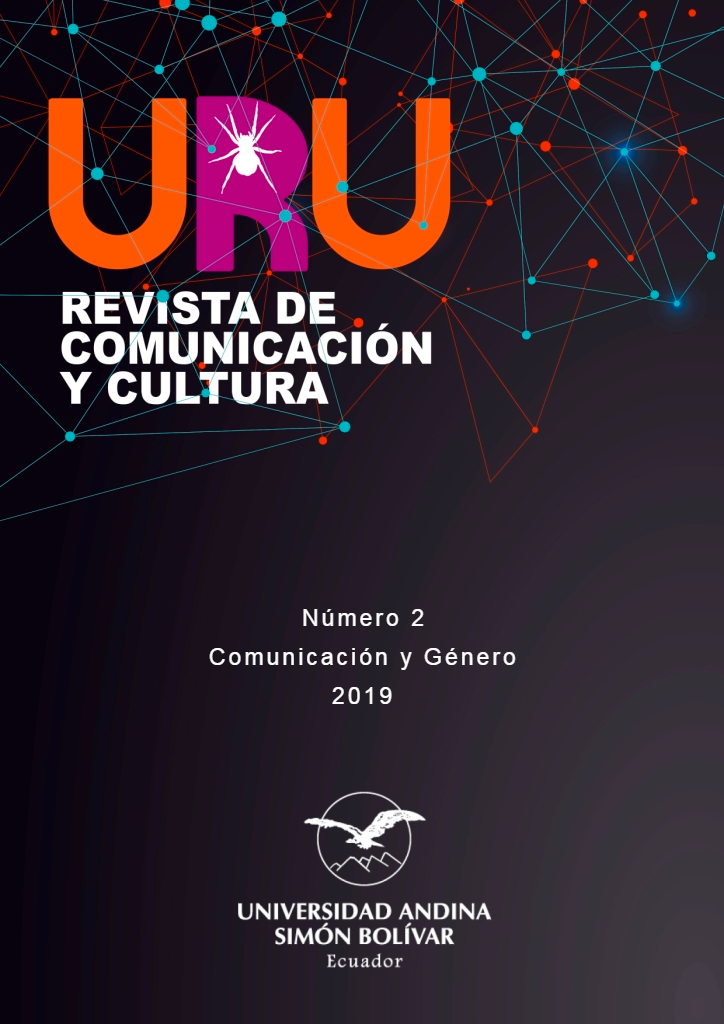Soccer World Cup 2018: sexism, networks and television show
Keywords:
journalism, gender, digital harassment.Abstract
Technology in journalism has modified its practices of production, dissemination and information consumption. It has also considerably transformed the relationship between journalists, media, sources and readers. The most common
interaction tools between journalists and digital users are social networks, spaces that, in addition to encouraging participation and contribution to generate content, have ledto the appearance of violent demonstrations against information professionals, mainly
women. The present study details the data obtained from a survey applied to several information professionals, who consider their job as risky, in addition to stating that there is harassment, which is expressed both physically and digitally. Specialists were
interviewed, who propose strategies to face the problem of harassment and violence in social networks. Methodologically, a netnography was applied, which included observing the Twitter account of three journalists, in order to identify the terms most frequently used to attack them.
Downloads
References
Berger, J., Blomberg, S., Fox, Ch., Dibb, M.,y Richard Hollis. (1974). Modos de Ver. Inglaterra: Comunicación Visual.
Bourdieu, P. (1998). La dominación masculina Barcelona: Editorial Anagrama.
Castellanos, G. (2010). Decimos, Hacemos, Somos, Identidades de Género y Sexualidad Cali: Ediciones Universidad del Valle.
Cordicom (2016). Discriminación y derechos a la comunicación: nuevos debates. Quito: Cordicom.
Natansohn, G. (2013). Internet en código femenino. Buenos Aires: La Crujía.
Powar, P. (2018). Panel de Discusión sobre la diversidad y en contra de la discriminación de la FIFA, Ponencia, Rusia, 11 de julio de 2018.
Rozenwajn Acheroy, S. (2018) “Género, cuerpso y deporte: una aproximaicón al contexto profesional. DOI: http://doi.org/10.25145/j.atlantid.2018.09.009Revista Atlántida, 9; diciembre 2018, pp. 171-182; ISSN: e-2530-853X
Segato, R. (2008), “¿Qué es un feminicidio? Notas para un debate emergente.”, en Fronteras, violencia, justicia: nuevos discursos, Segunda edición. México: Universidad Autónoma de México.
Vega, E. (2014). Quieres ver cómo se mata una puta. Quito: Universidad Politécnica Salesiana.
Páginas en Internet:
F.G FOOT, Quand Marina Lorenzo recadre fermement des supporters du Barça, video de YouTube, 23 de abril 2018, https://www.youtube.com/watch?v=qr1iS1f1r6U
Univisión Noticias, Periodista de Univisión cuenta cómo fue la agresión que sufrió en el Mundial de Rusia, 6 de julio de 2018. https://www.youtube.com/watch?v=p1IAWypiyuE
Los 40. María Gomez: “Ya era hora de que las mujeres digamos basta”, 2 de Julio de 2018, https://www.youtube.com/watch?v=PVAeRB6QklU
AFP, Mujeres narrando el mundial un desafío al sexismo en las redes sociales, Diario El Mundo, jueves 28 de junio de 2018. http://elmundo.sv/mujeres-narrandoel-mundial-un-desafio-al-sexismo-en-las-redes-sociales/
Pareja discutiendo por el mundial. 28 de mayo de 2018.https://www.youtube.com/watch?v=KkLFIBm1hzs
Downloads
Published
How to Cite
Issue
Section
License
ASSIGNMENT OF RIGHTS, DECLARATION OF CONFLICT OF INTEREST AND DISSEMINATION
The authors who publish in this journal accept the following conditions:
- Authors retain copyright and grant the journal the right of first publication, with the work registered under the Creative Commons Attribution-NonCommercial-ShareAlike 4.0 License, which allows sharing, adapting and attributing the work (see: Open Access Policies).
- Authors can make other independent and additional contractual agreements for the distribution of the article published in this journal (e.g., include it in an institutional repository or publish it in a book) as long as they expressly indicate that the article was published for the first time in Uru: Revista de Comunicación y Cultura. In the case of reproduction, a note similar to the following must be included: This text was originally published in the journal Uru: Revista de Comunicación y Cultura N ° -, year of publication.
- Authors are encouraged to publish their work on the Internet (e.g. on institutional or personal pages) in the final version published by Uru: Revista de Comunicaicón y Cultura as it may lead to a wider and faster dissemination of the published work.








